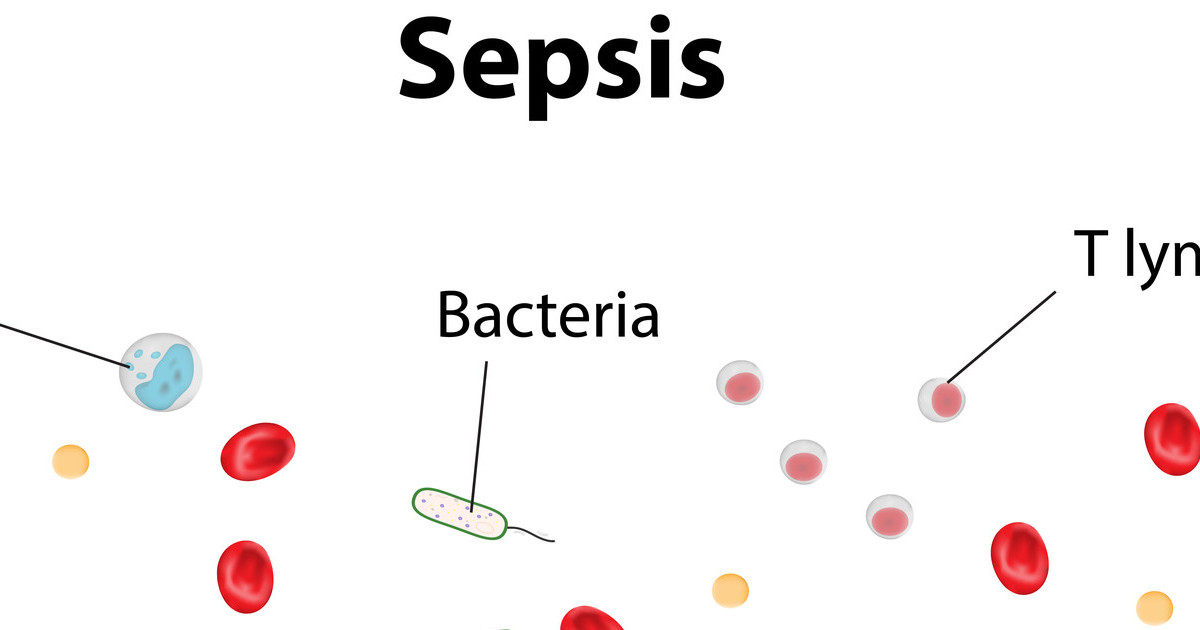Causes, Risk Factors, And Complications Of Disseminated Intravascular Coagulation (DIC)
Disseminated intravascular coagulation (DIC) causes the production of blood clots in an individual's small blood vessels that can obstruct blood flow to organs in the affected region. Clotting factors and platelets are components of the blood required for proper and effective blood clots formation. The former is a condition where the clotting factors become more active than usual, resulting in inappropriate blood clot formation. It can be acute and occur suddenly, or it may be chronic and develop slowly. This condition is diagnosed through a variety of tests. They include a physical exam, medical history, complete blood count, blood smear, serum fibrinogen, and fibrin degradation tests. Treatment is based on symptoms and may include blood transfusions, oxygen therapy, and other medications.
Disseminated intravascular coagulation treatment depends on the symptoms and underlying cause. However, prescription medications are quite common. Patients can receive anticoagulants, such as heparin, to clot their blood. Many acute cases are treated with hospitalization. Blood and plasma transfusions can help as well, and some patients will need oxygen therapy. Of course, patients must understand the causes and complications of disseminated intravascular coagulation first.
Infection Or Inflammation

An individual's infection or inflammation may cause disseminated intravascular coagulation. The most common bacterial infections implicated in this condition are gram-positive blood infections, rickettsia infections, and gram-negative blood infections. Some viral infections have also been involved in developing this condition, including human immunodeficiency virus, varicella-zoster virus, cytomegalovirus, and hepatitis viruses. Fungal Histoplasma infections and parasitic malaria infections have also been seen to induce disseminated intravascular coagulation. The systemic influx of proinflammatory cytokines results from microorganisms' specific cell membrane components. This includes endotoxins and lipopolysaccharides.
Large amounts of cytokines can stimulate the production and expression of a tissue factor that initiates the coagulation cascade. This results in inappropriate thrombin formation. Infections, such as pancreatitis, directly activate clotting factor X and elevate thrombin activity in the systemic circulation, causing the improper formation of clots. As they are a probable cause, individuals who contract such infections or have systemic inflammation are at an increased risk of developing disseminated intravascular coagulation.
Brain Or Crush Injuries

An individual who has experienced brain or crush injuries is at an increased risk of developing disseminated intravascular coagulation. This is due to the association between it and severe trauma. Brain injuries that occur due to trauma and crush injuries can induce this condition through a combination of different mechanisms. Crush injuries are known to cause a mass rupture of thousands of cells simultaneously upon bodily impact. This cause of cellular apoptosis induces the bulk release of tissue materials such as phospholipids and tissue factor into the patient's systemic circulation.
Crush injuries also cause a large volume of hemolysis (red blood cell destruction) on top of extensive damage to the blood vessel walls. Combining these mechanisms is thought to induce the coagulation cascade's reactive activation in multiple systems in the body. Individuals who suffer from brain or crush injuries involving trauma have almost identical sequencing of system-wide inflammatory cytokines as patients affected by a septic infection of the blood. It is difficult to pinpoint the exact processes of disseminated intravascular coagulation development in every brain and crush injury patient. However, the release of materials, extensive damage, and actions of a mass cytokine influx are thought to play critical roles.
Surgery

An individual who undergoes invasive or significant surgery is at an increased risk of developing disseminated intravascular coagulation following the procedure. Surgical stress following a major procedure is known to induce early system-wide leukocytosis, elevated cortisol levels, and adrenaline administration during the process. Systemic inflammatory response syndrome (SIRS) may develop due to the effects of surgical stress, which is known to throw off the healthy regulation of certain types of cytokines. This condition may progress into full-blown septicemia in patients within a day of their surgery. Upregulation of chemical mediators' actions can cause the affected individual to go into a hypercoagulable state. This is what triggers disseminated intravascular coagulation.
Any patient who undergoes a surgical procedure involving a large blood loss like cardiac surgeries is at an increased risk of developing this condition. Acute large volume blood loss and the administration of subsequent blood transfusions within a limited period can trigger it as well. Patients who have an acute hemorrhage during surgery experience an abnormal and exaggerated reaction involving the coagulation cascade's activation and upregulation. This can result in disseminated intravascular coagulation.
Delivered A Baby

Specific individuals who have recently delivered a baby are at an increased risk of developing disseminated intravascular coagulation. Some complications that occur in a woman who has given birth to a child are associated with the development of this condition. They include placental abruption, severe preeclampsia, eclampsia, retained dead fetus, acute fatty liver of pregnancy, amniotic fluid embolism, placenta previa, HELLP syndrome, delayed miscarriage, and septicemia. Several alterations occur in clotting factors and other substances involved with the clotting process during a woman's pregnancy. These alterations result in an average elevation of clotting factors and a mild hypercoagulable state that usually disseminates within several months following childbirth.
When a complication involving a massive hemorrhage during or following childbirth occurs, the excessive blood loss combined with existing hypercoagulability can trigger disseminated intravascular coagulation. In such cases, the body experiences widespread fibrin displacement due to system-wide activation of the coagulation cascade. Clots form in the microvessels and can cause organic failure.
Excessive Bleeding

Excessive bleeding is not only a potential cause of disseminated intravascular coagulation. It is also a severe and life-threatening complication of this condition. The increased coagulability in these patients leads to numerous clots in the microvessels throughout the body. In acute cases, there is a point where the increased clotting activity exceeds the availability of clotting resources. These clotting resources include platelets and clotting factors. Clotting activity exhausts platelets and clotting proteins to the extent where limited amounts are left to carry out normal clotting processes when they are needed.
This malfunction can cause the patient to experience varying degrees of internal and external bleeding. Internal bleeding occurs in tissues of the individual's brain, kidneys, and intestines. External bleeding has been reported from or underneath the skin and mucosa. Blood in the urine and stool, headaches, seizures, and double vision are symptoms reported when excessive bleeding has appeared as a complication of disseminated intravascular coagulation.
Hypothermia

Hypothermia is considered a complication of disseminated intravascular coagulation. It occurs when body temperature falls below ninety-five degrees Fahrenheit. The normal body temperature is around 98.6 degrees Fahrenheit. Symptoms include a weak pulse, lack of coordination or clumsiness, mumbling or slurred speech, shallow breathing, memory loss or confusion, low energy, and bright red skin. If left untreated, it can lead to fulminant heart and lung failure and, eventually, death.
Patients with hypothermia are also prone to frostbite and gangrene. Individuals can avoid both of these in cold weather by wearing warm clothes covering their face, neck, and head. Other tips are to avoid sweating a lot, wear many layers of lightweight clothing, and stay as dry as possible. Since disseminated intravascular coagulation affects patients with significant damage to organs or tissues, hypothermia puts them at a higher risk of developing the condition.
Sepsis

Sepsis is considered a common complication of disseminated intravascular coagulation. It is regarded as a life-threatening emergency and is defined as the body's extreme reaction to an infection. Common causes of sepsis include urinary tract infections or infections that start in the gastrointestinal tract, the lungs, or the skin. If left untreated, sepsis can lead to full organ failure, tissue damage, and death. It is not considered contagious, and in most cases, it originates from a bacterial infection. Patients with other chronic conditions like diabetes or cancer, children younger than one, individuals over sixty-five years old, and those individuals with weakened immunity are more prone to having sepsis.
When someone has experienced sepsis or septic shock, the chances of developing disseminated intravascular coagulation are higher. Both difficulties with clotting or blood clotting itself may end up creating a vicious cycle. Research claims that thirty-five percent of sepsis patients are affected by disseminated intravascular coagulation. While only one-third of them die, survivors are left with chronic pain and fatigue, amputations, organ dysfunction, and even post-traumatic stress disorder.
Pancreatitis

Another complication is pancreatitis, which is the result of an inflamed pancreas. The pancreas is a large gland located behind the stomach and is the size of a hand. This organ has two essential functions: releasing insulin to the bloodstream and liberating a powerful enzyme to aid digestion. Some common pancreatitis symptoms are nausea and vomiting, swollen and tender abdomen, pain in the upper part of the stomach, fever, and higher heart rate.
The risk factors are gallstones, the use of certain medications, drinking excessive amounts of alcohol, infections, surgery, traumas, metabolic disorders, and some autoimmune diseases. Disseminated intravascular coagulation and other abnormalities have been observed in patients with pancreatitis. This is why it is vital to prevent pancreatitis by exercising regularly, quitting smoking, eating a low-fat diet, and limiting alcohol consumption.
Organ Failure

Disseminated intravascular coagulation can lead to multiple organ failure. The latter is considered a process in which more than one organ system, such as the renal system, fails in the patient's body. It is devastating and often associated with severe sepsis. However, it can also be present with pancreatitis, burns, fulminant infections, and traumas. It is considered a medical emergency with a mortality rate of eighty percent, mostly among septic patients.
Some organ failure symptoms are excessive fatigue or drowsiness, sudden or unexplained shortness of breath, a reduced amount of urine, and retention of fluids. Patients need to call 911 if they experience any of these symptoms. Due to the abnormal blood clotting throughout the body's blood vessels, disseminated intravascular coagulation can lead to tissue damage and, consequently, to multiple organ failure.
Blood Transfusion Reaction

A blood transfusion is a safe procedure that aims to replace blood loss caused by surgery, illness, or trauma. Patients receive blood transfusions through an intravenous line. In some cases, only some parts of blood are transfused. However, when individuals have an adverse reaction to a transfusion, it can lead to scary complications. This includes disseminated intravascular coagulation.
An adverse reaction occurs when the patient's immune system destroys red blood cells given during the transfusion. This process is medically known as hemolysis. One of the typical causes of hemolysis is receiving the incorrect blood product due to human error. If an adverse reaction occurs, the transfusion is stopped immediately, and vital signs are monitored. The specialist will determine the most appropriate treatment. On the other hand, plasma transfusions are considered a treatment alternative for patients with massive bleeding types of disseminated intravascular coagulation.
